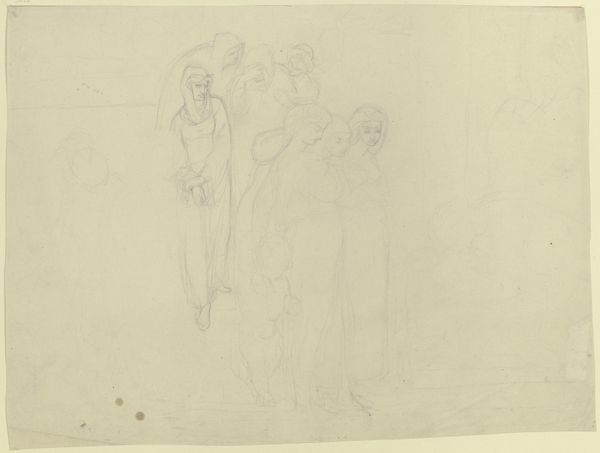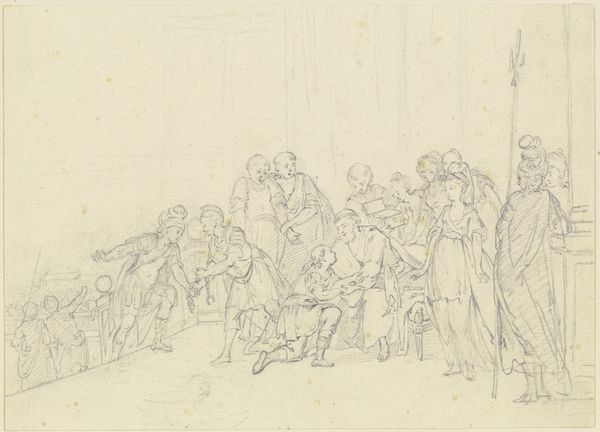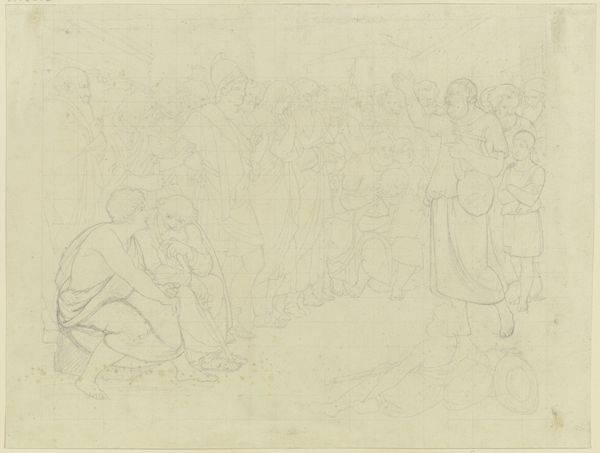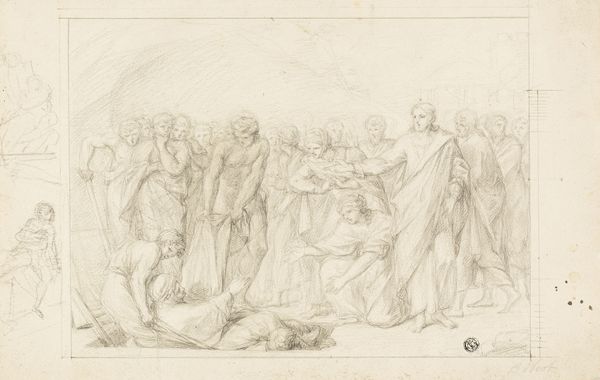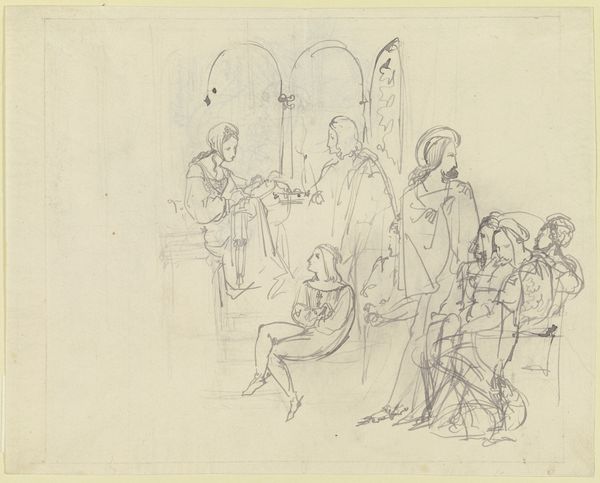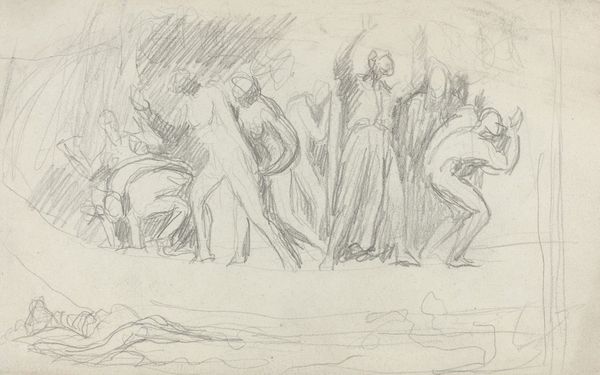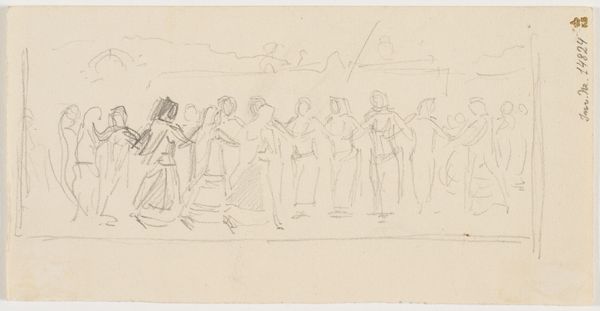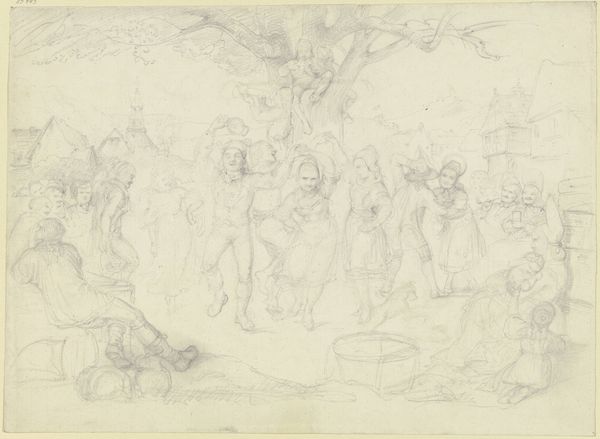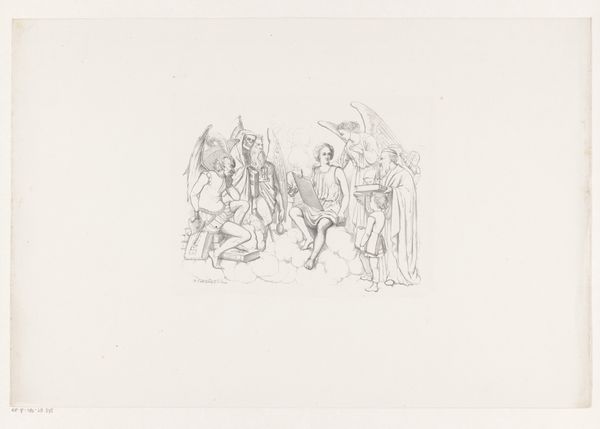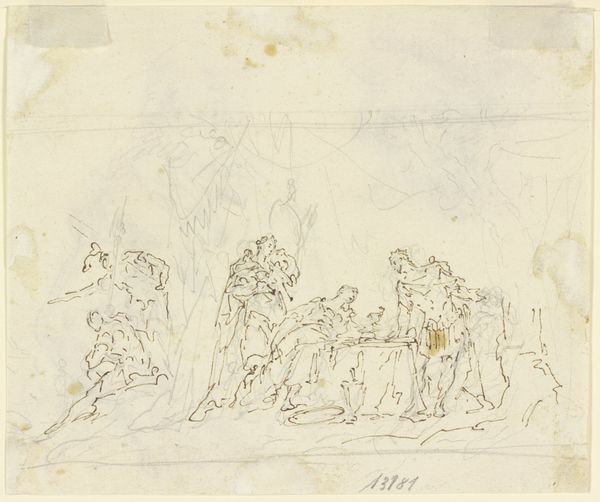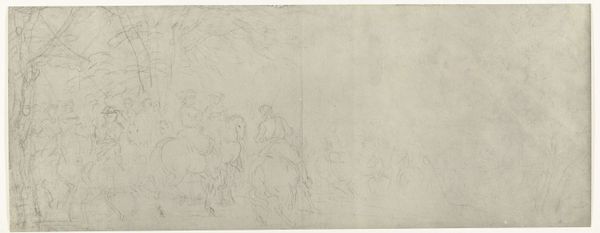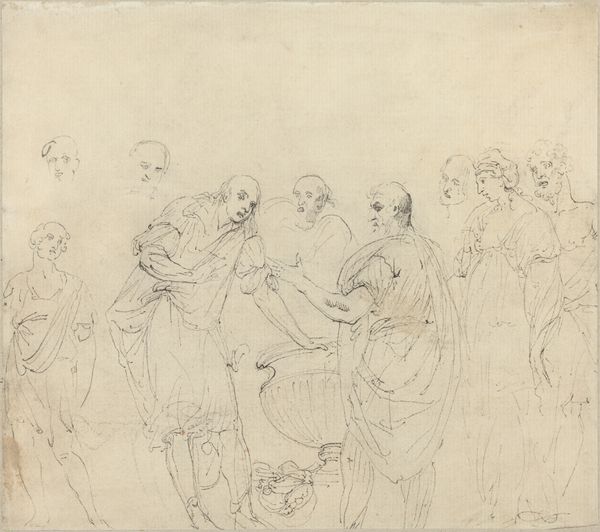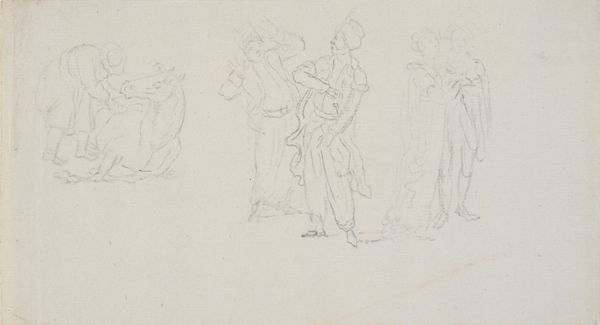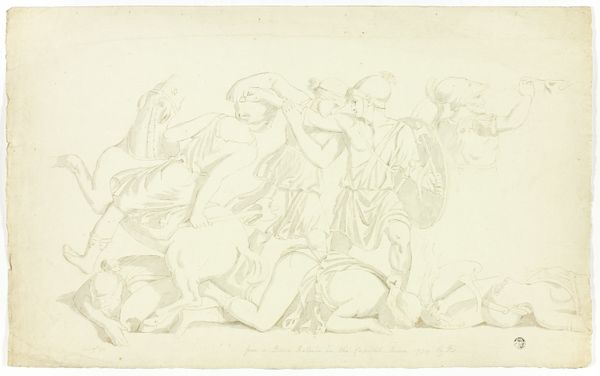
Bjergprædikenen. Frisekomposition med studie til afvigende relief i Slotskirken 1828 - 1831
0:00
0:00
drawing, pencil
#
drawing
#
figuration
#
pencil
#
line
#
history-painting
#
academic-art
Dimensions: 117 mm (height) x 426 mm (width) (bladmaal)
Editor: Here we have H.W. Bissen's pencil drawing, "The Sermon on the Mount: Frieze Composition with a Study for an Alternative Relief in the Palace Church," created between 1828 and 1831. It’s a rather faint, linear depiction of a crowd listening to a figure. What can you tell me about the historical context of this piece? Curator: Well, the historical and social setting is really key here. Bissen was working during a period of significant national identity formation in Denmark, right? Churches, like the Palace Church for which this was intended, became important public spaces for conveying moral and national values. Editor: So the frieze, as a public artwork, served a purpose beyond just aesthetic pleasure? Curator: Precisely. Think about who would be viewing this – the royal family, members of the court, visiting dignitaries. The frieze depicting Christ's sermon on the mount would present a very specific, idealized vision of morality and leadership to a select public. Why do you think the artist chose the Sermon on the Mount? Editor: Maybe because it highlights themes of justice, peace, and humility – values the monarchy perhaps wanted to associate with itself? Curator: Exactly. The choice of subject, its placement within the Palace Church, it's all very calculated. What are your thoughts on the artistic conventions deployed? How do the artist's decisions tie into existing representational traditions? Editor: The linearity, the idealized figures – it all seems to hearken back to classical art, almost a revival of sorts. But the context it appears in lends this artwork an additional layer. The classical style reinforces these concepts and amplifies them into a sense of stability and authority of the nation, and the Danish monarchy. Curator: Precisely. Bissen uses the visual language of power and timelessness to underscore a very contemporary message. This sketch gives us some insights into how artists participated in shaping a nation's image through a selective and strategic use of historical and artistic references. It makes me think about art's role in modern Danish social history. Editor: It really reshapes my thinking on history and power and really clarifies Bissen’s work.
Comments
No comments
Be the first to comment and join the conversation on the ultimate creative platform.
